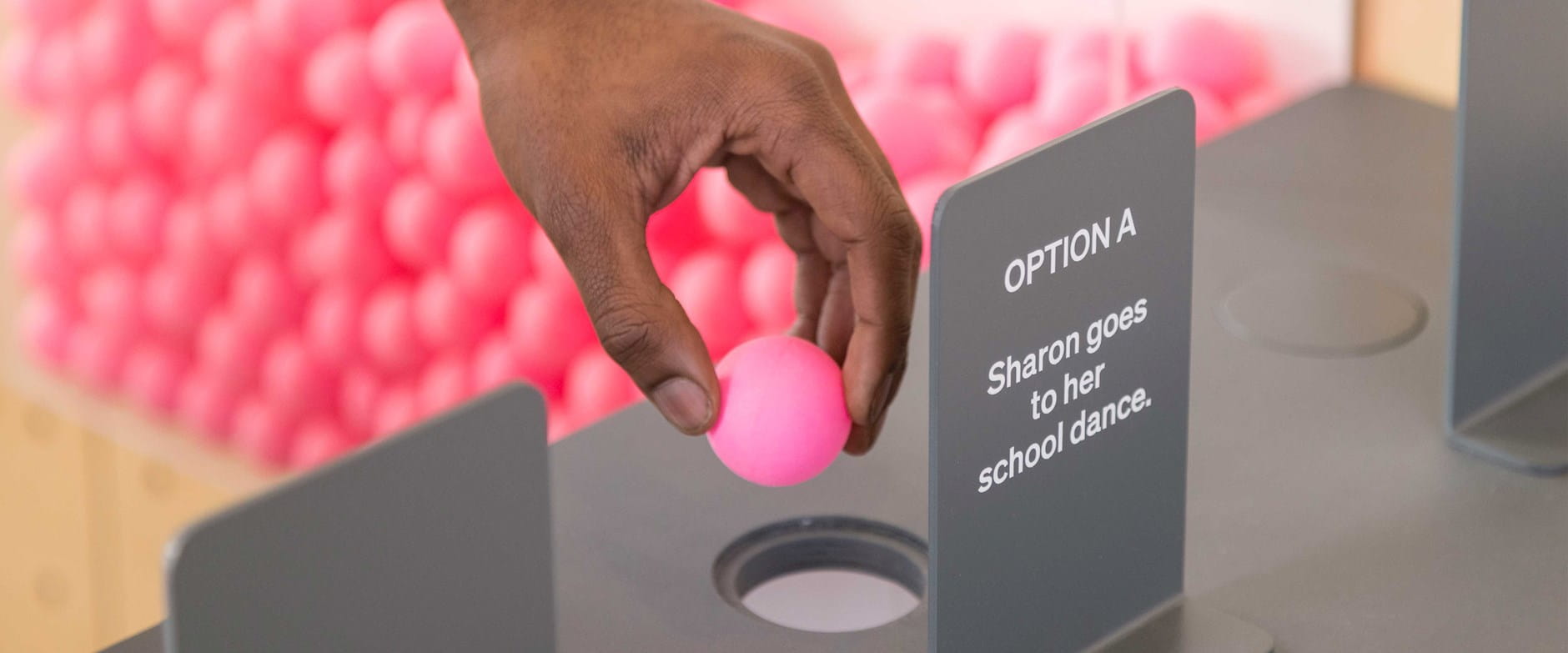
Life comes at you fast—with new information at every step. When there’s no time to fact-check everything yourself, how do you decide whether or not to believe what you read? In this exhibit, you will discover why some stories feel more convincing than others, especially when the details misdirect our attention.
This exhibit introduces us to a person named Sharon and provides details about her life—and then asks us to consider two potential scenarios and decide which feels more believable and true. Visitors register their answers through the placement of a pink ball, after which they can see the aggregate data collected and displayed on the other side of the exhibit.
Images from the Exhibit
A mental shortcut called the representativeness heuristic is at work here, and as the exhibit data shows, it has a powerful effect on the human mind. When two events that occur together provide details that are consistent with our expectations, it can confuse our thinking about the actual likelihood of events.
Schedule Your Visit
Are you ready to visit Mindworks? We look forward to having you.
Further Readings: The Science behind the Exhibit
Details can make something feel true, but that doesn’t mean it’s actually more likely. To overcome the conjunction fallacy, the science behind this experiment encourages participants to try to think about the likelihood of events in a visual way. This can help remove distracting details that might be clouding your judgment about what is actually true versus what merely sounds convincing.
- Tversky, A., & Kahneman, D. (1983). Extensional versus intuitive reasoning: The conjunction fallacy in probability judgment. Psychological Review, 90(4), 293.
- Shah, A. K., & Oppenheimer, D. M. (2008). Heuristics made easy: an effort-reduction framework. Psychological Bulletin, 134(2), 207.
- Shah, A. K., & Oppenheimer, D. M. (2007). Easy does it: The role of fluency in cue weighting. Judgment and Decision Making, 2(6), 371–379.
Explore More Mindworks Exhibits
Share This Page
Tell your friends and family about this Mindworks exhibit on social media.









